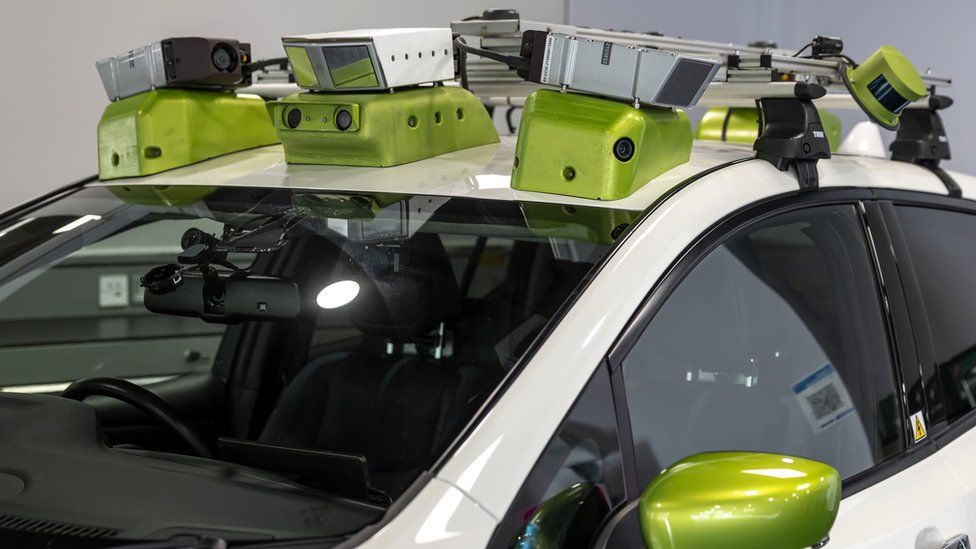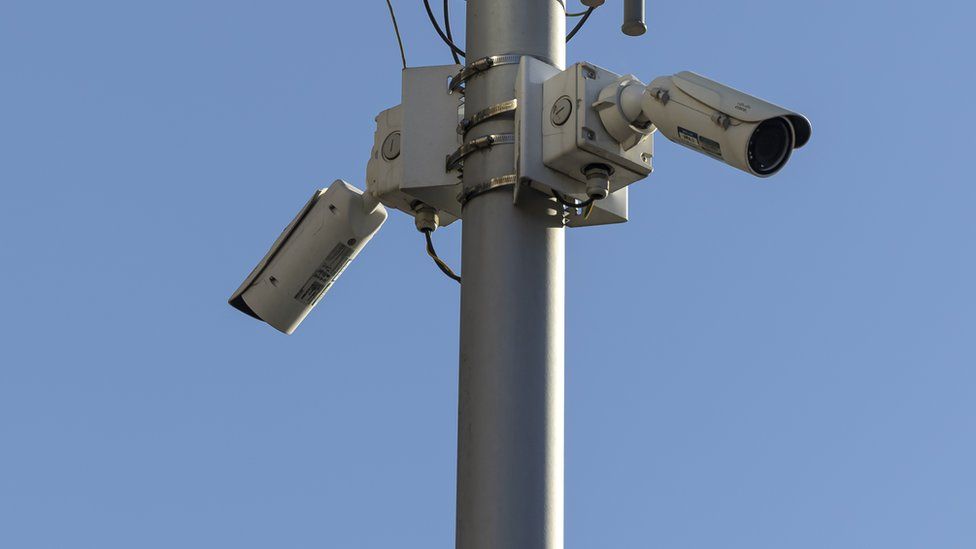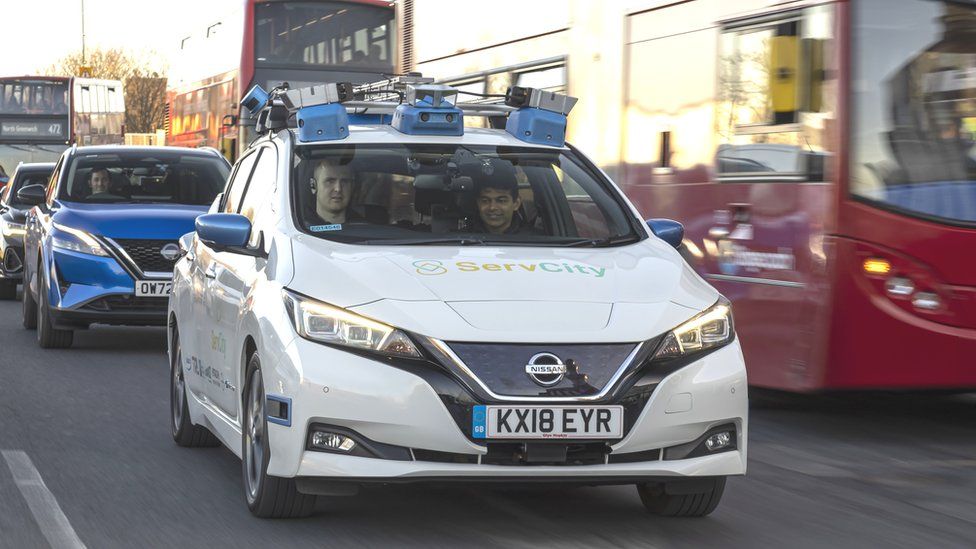The tech helping driverless cars see round corners
This video can not be played
To play this video you need to enable JavaScript in your browser.
“A bit like X-ray vision” is how engineer James Long describes the effect of the technology he’s working on.
Sitting in front of a bank of TV screens showing busy London streets, he’s explaining to me how a network of roadside cameras is helping a self-driving car to navigate heavy traffic.
The cameras are used to help the car identify potential hazards in advance, before they can be picked up by its own sensors. This allows it to anticipate problems, and progress more smoothly through traffic.
The system has been on trial on the roads of Woolwich, in south-east London, as part of the ServCity project which aims to refine autonomous technologies for busy city streets.
The scheme, which has been operating for three years, is run by a consortium including Nissan, Hitachi Europe, the Transport Research Laboratory and the University of Nottingham, among others. It is now coming to an end.

The project uses Nissan’s electric Leaf model. Each car is festooned with cameras and sensors, many of them bolted to a perfectly ordinary roof rack. The boot is full of computers and electronics. It all looks rather rough and ready.
But out on the road, following a circuit between roundabouts on the A206, it feels smooth and controlled. Sitting in the back seat, it’s remarkably easy to forget the car is guiding itself.
Such precision is helped by guidance systems using precise 3D mapping, highly accurate GPS, radar, and Lidar – a laser-based sensing method.
Over the past three years, ServCity’s cars have racked up some 1,600 miles of autonomous driving, without a serious incident – though on every outing a safety driver has been in position to take control if necessary.
It is an impressive record. The roads of Woolwich are busy and unpredictable. Buses dice with taxis, delivery drivers stop without warning, and cyclists weave through heavy traffic.
“What we’re actually trying to do is expand the boundaries of autonomous drive,” explains David Moss, Nissan’s senior vice president for research and development in the UK and Europe.
“So we want to be able to improve not just the ability to drive on the highway, but also to take on complex environments in the city.”
Trials of self-driving vehicles are nothing new. There are even commercial services using them as taxis, on a strictly controlled basis, in some cities in the US, China and South Korea.

This project, however, has focused specifically on finding ways for the car to use roadside infrastructure, such as traffic cameras, to improve its awareness – and allow it to drive more smoothly.
This is where the technology being overseen by James Long comes in.
He is the head of technical consulting at the Smart Mobility Living Lab, which was set up with the help of government funding to create a test-bed for connected and self-driving technology in London.
“What we’ve been looking at particularly is things like parked vehicles and buses in bus stops that are beyond the line of sight,” he says.
“So we’ve been using our roadside cameras and infrastructure to be able to see those situations – a bit like X-ray vision – beyond the line of sight in such a way that the information can be transmitted to the vehicle.”
Ultimately, this kind of technology could be used to build a kind of ecosystem in which cars do not rely on their own sensors, but take in a wide array of information from communicating with their surroundings, and indeed with one another.
In theory, that should reduce congestion.

“I really applaud this approach,” says Sven Beiker, founder of the Silicon Valley Mobility consultancy, and a former head of the Center for Automotive research at Stanford University.
“We need this connection between the automated, self-driving, autonomous vehicle and a centralised infrastructure and potentially to other vehicles as well.
“I do not think you can have a self-driving car without some sort of connection to road infrastructure.”
But although the ServCity trial is clearly impressive, Mr Beiker thinks it will be years before use of self-driving cars in cities becomes widespread, because of the need to prepare infrastructure and develop high-definition 3D maps in every area they are to be used.
“If you were to say to the operator [of this project], ‘Hey, I love your service, can you get us a demo in Manchester tomorrow?’, it would be impossible,” he says.


Mr Beiker says expanding such services will be an incremental process.
“It almost goes on a street-by-street basis. It’s not city-by-city. It’s much more like, OK, you did this street, let’s do the next street.”
Nissan’s David Moss agrees that it will be many years before fully autonomous cars become mainstream. However, he thinks some of the benefits of trials like ServCity will be seen sooner rather than later.
“The final end result is a long way off,” he says.
“But some of what we’ve learned, we will progressively build into the cars going onto the roads today.”
